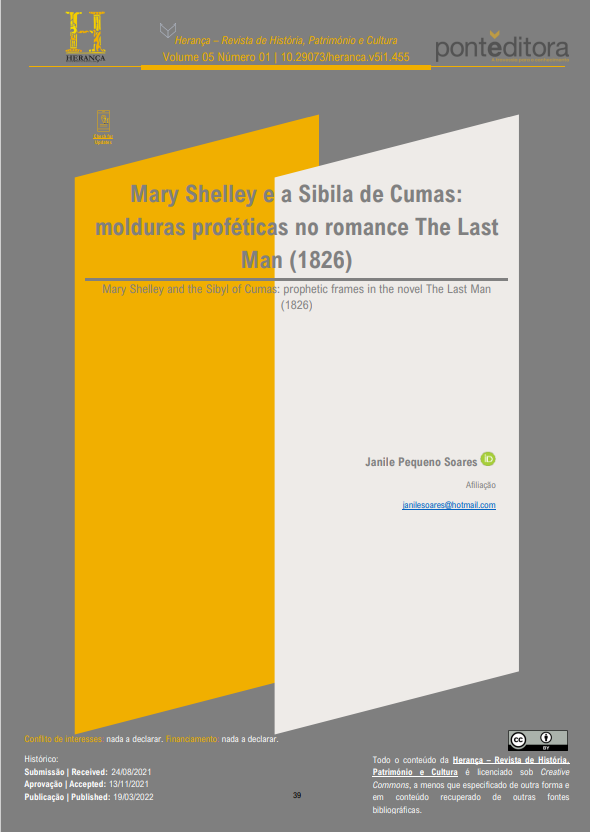Mary Shelley and the Sibyl of Cumas prophetic frames in the novel The Last Man (1826)
Main Article Content
Abstract
Abstract
In 1826 the English writer Mary Shelley published the apocalyptic novel The Last Man, telling the story of how humanity was dissipated by a plague in 2100, leaving only one survivor who, immune to the pandemic, decided to write a diary telling the story of the end of the world as he knew it. By presenting the account that led to the writing of the narrative, Mary Shelley puts us in contact with the myth of the Sibyl of Cumas, revealing to have found the manuscript that indicated the facts she narrated in her novel. This paper aims to discuss the importance of the introduction text to the novel, considering the frames established between the myth of the Sibyl and Shelley's creative abilities.
Downloads
Article Details

This work is licensed under a Creative Commons Attribution 4.0 International License.
References
BENNETT, Betty T. Mary Shelley in Her Times. John Hopkins University Press: Baltimore, 2000.
GILBERT, Sandra; GUBAR, Susan. The parables of the Cave. In: The madwoman in the attic: the woman writer and the Nineteenth-century literary imagination. Boston: Yale University Press, 1984.
GILBERT, Sandra; GUBAR, Susan. Infecção na sentença: a escritora e a ansiedade de autoria. In: BRANDÃO, Izabel (Org.). Traduções da Cultura: perspectivas críticas feministas (1970-2010). Florianópolis: EDUFAL; Editora da UFSC, 2017.
JOHNSON, Barbara. A life with Mary Shelley. Stanford: Stanford University Press, 2014.
SHELLEY, Mary. The Last Man. Edição bilíngue. Tradução de Marcella Machado C. Furtado. São Paulo: Editora Landmark, 2007.

